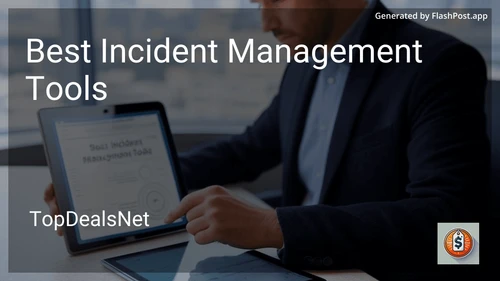Best Incident Management Tools in December 2025

PagerDuty
- Real-time alerts and incident response
- On-call scheduling and escalations
- Automation and event intelligence
- Advanced analytics and reporting
- Integration with over 700 IT and business tools

ServiceNow
- End-to-end incident lifecycle management
- AI-driven automation and prioritization
- Multi-channel communication and collaboration
- Comprehensive dashboards and reporting
- Integration with existing IT ecosystems

Opsgenie
- Incident alerting and routing
- On-call management and rotation
- Escalation policies and reporting
- Mobile app for managing incidents on-the-go
- Integration with popular monitoring and chat tools

Splunk On-Call (formerly VictorOps)
- Real-time collaboration and alerts
- Incident timeline and reporting
- On-call duty management
- Automated escalations and remediation
- Seamless integration with monitoring and deployment tools
In today's fast-paced digital landscape, businesses and organizations must be prepared to handle unexpected incidents effectively. Incident management tools play a crucial role in minimizing disruptions and maintaining seamless operations. This article delves into the essential features of incident management tools and offers guidance on how to choose the best one for your needs.
Understanding Incident Management
Incident management is a structured process for identifying, analyzing, and responding to incidents. These could be anything from IT service disruptions to security breaches. The primary goal of incident management is to restore normal service operation as quickly as possible while minimizing the impact on business operations.
Key Features of Incident Management Tools
When exploring incident management tools, it's important to consider several key features that contribute to effective incident handling:
1. Real-Time Alerts and Notifications
Effective incident management tools provide real-time alerts and notifications, enabling teams to react swiftly to emerging issues. This proactive approach helps in minimizing downtime and ensures a quicker return to normal operations.
2. Automated Workflows
Automation plays a crucial role in streamlining incident management processes. Look for tools that offer automated workflows to facilitate incident reporting, escalation, and resolution. Automation reduces manual intervention, leading to faster incident resolution.
3. Comprehensive Reporting and Analytics
Having access to detailed reports and analytics is vital for assessing the effectiveness of incident management practices. Tools with robust reporting capabilities allow organizations to analyze trends, identify areas for improvement, and optimize future incident management strategies.
4. Integration Capabilities
The ability to integrate with other software applications and systems ensures smoother operations. Choose a tool that offers integration capabilities with existing software to enhance data sharing and streamline incident management processes.
5. Customization and Scalability
As organizations grow, their incident management needs evolve. Select tools that offer customization options and are scalable to accommodate organizational changes, ensuring they remain relevant and effective over time.
Choosing the Right Incident Management Tool
Selecting the best incident management tool requires careful consideration of specific organizational needs and priorities. Here are a few guiding principles to help you make an informed decision:
Evaluate Your Requirements
Begin by assessing your organization’s current incident management processes and identifying gaps or areas for improvement. Understanding these requirements will help you choose a tool that aligns with your operational goals.
Consider User Experience
The tool's user interface and overall experience are critical for ensuring quick adoption by your team. Opt for tools that are intuitive and user-friendly, minimizing the learning curve for your staff.
Assess Vendor Support and Reliability
Reliability and support from the tool's vendor can significantly impact your overall experience. Investigate vendor reputations through reviews and request demonstrations or trials to evaluate support quality.
Cost-Effectiveness
Budget considerations are important. Compare pricing structures and evaluate the cost-effectiveness of each tool. Balance initial costs against long-term value to choose a tool that provides a solid return on investment.
Conclusion
Incident management tools are indispensable for maintaining business continuity and minimizing disruptions. By understanding key features and carefully considering organizational needs, you can select an incident management tool that empowers your team to manage incidents effectively.
For more insights on optimizing your business processes, you might also find interest in exploring Dungeons & Dragons Online Tools and Top Lead Capture Tools. These resources provide valuable information on various tools that can enhance your operational efficiency.
